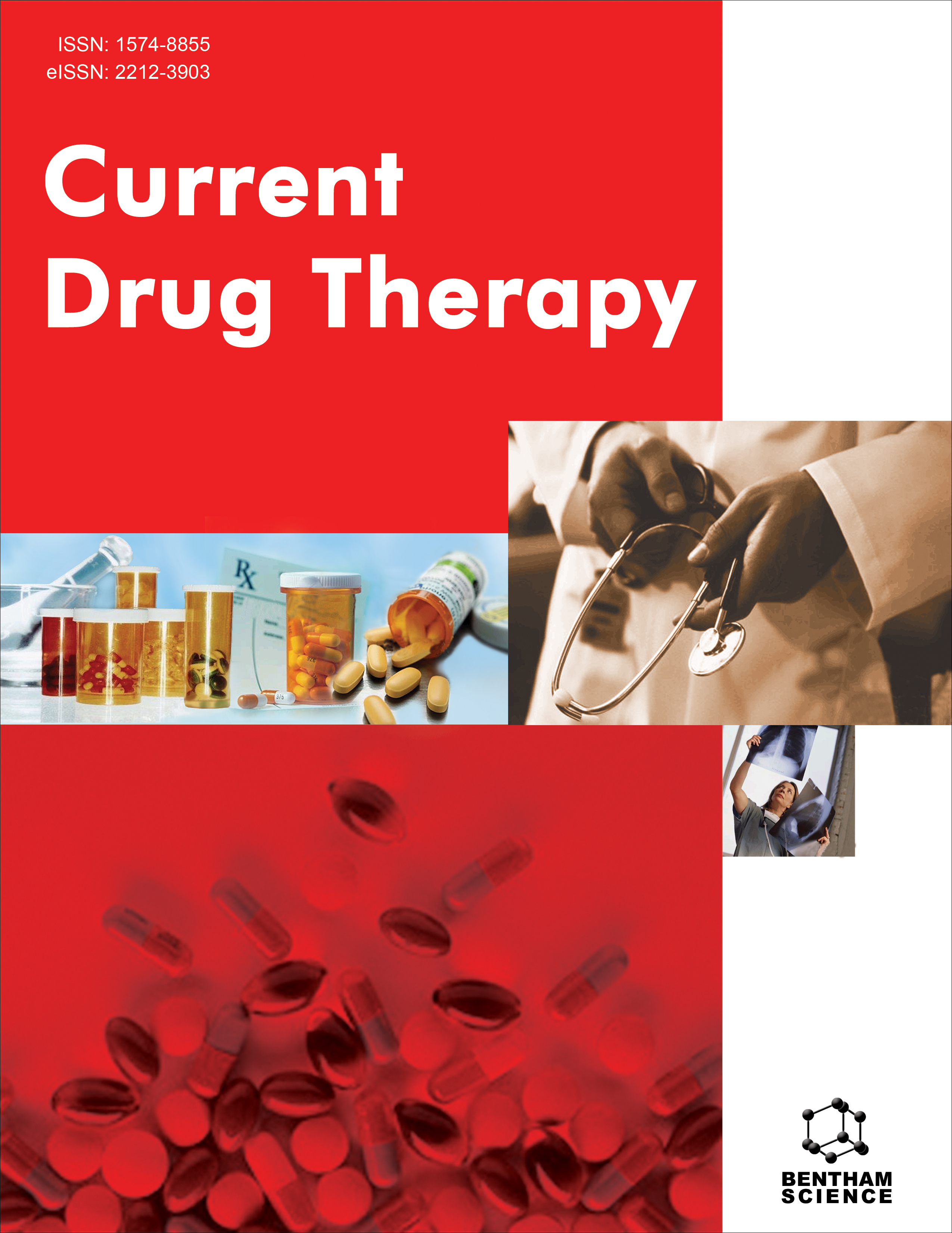- Home
- A-Z Publications
- Current Drug Therapy
- Previous Issues
- Volume 12, Issue 2, 2017
Current Drug Therapy - Volume 12, Issue 2, 2017
Volume 12, Issue 2, 2017
-
-
Ezetimibe: A Drug for the Treatment or Prevention of Cholesterol Gallstones?
More LessBackground: Ezetimibe is an inhibitor of the intestinal absorption of cholesterol. There are different cholesterol transporters in small intestine and one of the most important is Niemann-Pick C1L1 protein (NPC1L1), who is the therapeutic target of ezetimibe. When we talk about cholesterol gallstones disease, we deal with a public health problem, whose pharmacological treatment is limited. Ursodeoxycholic acid is used to di Read More
-
-
-
Current Drug Design Strategies for Fighting Against Swine Influenza
More LessAuthors: Muneer Alam and Sisir NandiBackground: Swine influenza is a seasonal health threat due to global outbreak of H1N1 pandemic in 2009 leading to death of millions of people because of antigenic drift of the dangerous influenza A viral strains. Scarcity of specific chemotherapeutics emphasizes the priority of drug design and discovery of new anti-influenza leads having less toxicity and resistant to the dynamic viral strains. Objective: The present review is Read More
-
-
-
Mechanistic Approach to Explore Isoniazid Derivatives as Antitubercular Agents Using KNN-MF Based-QSAR Analysis, Pharmacophore Modeling and Molecular Docking
More LessAuthors: Ekta Verma, Shivangi Agarwal, Shailendra Patil, Sushil K. Kashaw and Asmita GajbhiyeBackground: The resistant to current therapy against tuberculosis is tremendously increasing, novel potential anti-tubercular compounds should be developed at the urge. The presently reported analogues act by binding to the kat-G gene present in Mycobacterium tuberculosis which converts them into active form, thereby inhibiting inhA mediated mycolic acid synthesis. Objective: To establish structure activity relationship, ide Read More
-
-
-
Formulation of Rifampicin Loaded PEGylated 5.0G EDA-PAMAM Dendrimers as Effective Long-Duration Release Drug Carriers
More LessObjective: The aim of present study is to develop and explore efficiency of 5.0G EDA PAMAM dendrimers as long-duration drug release carriers for the treatment of tuberculosis. Method: Rifampicin (RIF) was selected as a major drug for incorporation into PAMAM dendrimers based on its anti-tubercular activity and hydrophobic nature. Further polyethylene glycol (PEGylated) PAMAM dendrimers were evaluated for their hemoly Read More
-
-
-
Ceftriaxone and Phenylalanine Combination as Broad Spectrum Antimicrobials Therapy
More LessBackground: Ceftriaxone belongs to the third-generation β-lactam antibiotics and it is useful for the treatment of a number of infectious diseases caused by both aerobic and anaerobic Gram-positive and Gram-negative bacteria. Phenylalanine is an essential aromatic amino acid of human being, from which dopamine and norepinephrine neurotransmitters are being synthesized. In the present study, we examined their com Read More
-
-
-
Design and Development of Resveratrol NLCs and their Role in Synaptic Transmission of Acetylcholine in C. elegans Model
More LessAuthors: Anubhav Anand, Malti Arya, Gyanendra Singh, Gaurav Kaithwas and Shubhini A. SarafBackground: The damage of synapses and neurons leads to the cognitive impairment and this is the root cause of progression of Alzheimer's disease. The nematode Caenorhabditis elegans is widely used as an in vivo model to study the synaptic transmission because of the relatively modest worm nervous system, which is like mammals. Objective: The aim of this work is to assess the effectiveness of resveratrol-loade Read More
-
-
-
Optimization of Ivabradine Hydrochloride Transdermal Patch by D-Optimal Mixture Design: In Vitro and In Vivo Evaluation
More LessBackground: The anti-anginal agent ivabradine hydrochloride acts by selective and specific inhibition of the cardiac pacemaker current. The oral bioavailability of ivabradine is approximately 40% because of first-pass effect in liver and intestines. Objective: The present study targets QbD abetted formulation and in vivo evaluation of transdermal patch to avoid limitations allied with oral administration. Method: Transdermal Read More
-
Volumes & issues
-
Volume 20 (2025)
-
Volume 19 (2024)
-
Volume 18 (2023)
-
Volume 17 (2022)
-
Volume 16 (2021)
-
Volume 15 (2020)
-
Volume 14 (2019)
-
Volume 13 (2018)
-
Volume 12 (2017)
-
Volume 11 (2016)
-
Volume 10 (2015)
-
Volume 9 (2014)
-
Volume 8 (2013)
-
Volume 7 (2012)
-
Volume 6 (2011)
-
Volume 5 (2010)
-
Volume 4 (2009)
-
Volume 3 (2008)
-
Volume 2 (2007)
-
Volume 1 (2006)
Most Read This Month
Article
content/journals/cdth
Journal
10
5
false
en


